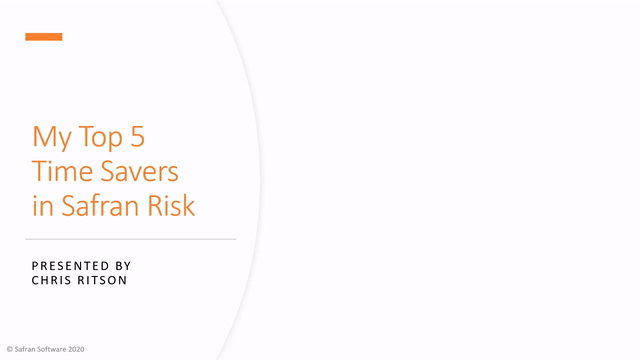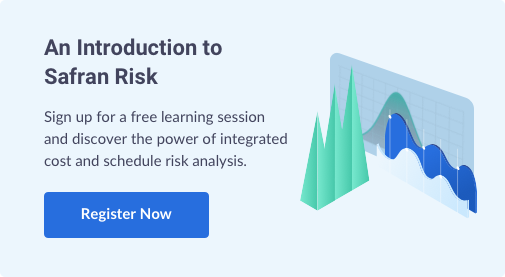Administering a quality quantitative schedule risk analysis (QSRA) on a live project is no simple task. An indisputable constraint for creating a robust QSRA is the time available to validate and probe your model for insights. As an experienced Project Risk Manager, I have certainly witnessed ample timescales to create, test, and provide risk models slip away.
Why is there often a 'time crunch'?
At every stage of information collection and review, there's a chance for delay due to siloed approaches, change management, or delivery pressures elsewhere. Coupled with antiquated tools that give rise to inefficient processes and anomalies in the inputs, it doesn’t take long for the various issues to compound.
How to save time with your QSRAs
The solution to alleviating “time crunch” isn’t one “silver bullet”, but the cumulative effect of lots of smaller “time-saves”. In other words, the solution is using a product like Safran Risk. Through an effective design and some incremental improvements to team approaches, it's possible to reduce the time required to perform a quantitative risk analysis that enables quality decisions.
In addition, you'll have the support of the Safran Team to guide and support you, with this video being the perfect first step. In this first video, I explore 5 ways you'll notice time being saved with Safran Risk.
How to increase the business value of your QSRAs
Once you've mastered the art of minimizing that “time crunch” feeling and you have discovered ways to win back time, it makes sense to start attempting the things you wish you had time to do. I’m sure you’ll have a wish-list in mind, but I recommend checking out the video below to discover a few ways you can dig a little deeper into your analysis to provide better recommendations and develop a stronger relationship with project managers, engineers, and other stakeholders.
Summary
By communicating more effectively on meaningful outputs and alternative possibilities to decision-makers, the value you add will create greater demand for your skillset and nudge teams to demand risk-decision models earlier and more frequently in the project lifecycle.
I hope you'll take the time to view these videos so you can see how using Safran Risk will enable you to make a real difference with your QSRAs.
What do others think?
I’m not alone in my thinking. Mike Wilson is a senior project controls expert at Prima Uno. Mike frequently undertakes project risk analyses and has used a variety of project risk analysis tools during his career in project controls. After recently switching to Safran Risk, Mike states:
"With Safran Risk there's an easy transition with a significant reduction in turnaround time. When I used to use OPRA (Oracle Primavera Risk Analysis), the time it took to complete the analysis and create reports took three days, and they were long days. Within the first couple of uses of the software (Safran Risk), I'd cut that time to less than half. I was doing it in a day, two days tops. It was unbelievable – there was no going back. This was the future."
You can read Mike's full case study here to learn how he saves all this time to deliver more project value
ABOUT THE AUTHOR
 Chris Ritson is an award-winning risk manager with over 13 years of experience in delivering complex infrastructure projects in the UK for the Highways Agency, Crossrail, Network Rail and High Speed 2.
Chris Ritson is an award-winning risk manager with over 13 years of experience in delivering complex infrastructure projects in the UK for the Highways Agency, Crossrail, Network Rail and High Speed 2.







